Each of the 50 states, the District of Columbia, Office of Overseas Schools, and the U.S. Department of Defense Education Activity will select one assistant principal to represent their state. State winners are selected from applications submitted to the state associations.
Because each state’s selection process varies, please contact your state association for more information on their selection process.
2020 State Assistant Principals of the Year
| State | Name | School |
|---|---|---|
| Alabama | Jennifer West | Buckhorn High School |
| Alaska | Daniel Beck | Kenai Middle School |
| Arizona | Beth Lehr | Sahuarita High School |
| Arkansas | Don Eichenberger | Springdale High School |
| Colorado | Waren Morrow | Lesher Middle School |
| Connecticut | Todd Manuel | Trumbull High School |
| Delaware | Kyle Bentley | Cape Henlopen High School |
| Florida | Melissa Laudani | Tuskawilla Middle School |
| Georgia | Tammy Marion | Mary Persons High School |
| Hawaii | Larisa Gadach | Ewa Makai Middle School |
| Idaho | Craig Miller | Thunder Ridge High School |
| Indiana | Susan Summers | Homestead High School |
| Iowa | Sean Baylor | Franklin Middle School |
| Kentucky | Jeff Schneider | Highlands High School |
| Maine | Erin Maguire | Bonny Eagle High School |
| Maryland | Catherine Sutton | Calvert High School |
| Massachusetts | Christopher Costa | Joseph Case High School |
| Michigan | Colleen Gruben | Warren Woods Tower High School |
| Minnesota | Jill Walter | Bemidji High School |
| Mississippi | Matt Buchanan | Northwest Rankin High School |
| Missouri | Jon Fitzgerald | Pattonville High School |
| Montana | John Larsen | Dawson County High School |
| Nebraska | James Kasik | Schuyler Central High School |
| New Mexico | Rebekah Floryance | Career Enrichment Center and Early College Academy |
| New York | Kristen Lennon | Shenendehowa High School West |
| North Carolina | Carl Cruthis | Southwest High School |
| North Dakota | Wayne Samson | West Fargo High School |
| Ohio | Meg Simon | Findlay High School |
| Oklahoma | Eric Fox | Jenks High School |
| Oregon | Amy Nimz | Dexter McCarty Middle School |
| Pennsylvania | Monica Ouly | Orefield Middle School |
| Rhode Island | Toby Gibbons | Narragansett High School |
| South Carolina | Leah Sarantopoulos | Carolina Springs Middle School |
| South Dakota | Chad Johnson | Watertown Middle School |
| Tennessee | Kevin Gideon | Bartlett High School |
| Texas | April Harris | Midway Middle School |
| Utah | Audrey Fish | Oquirrh Hills Middle School |
| Vermont | Robert Gulardo | Twinfield Union School |
| Virginia | Rebecca Harmon | Bailey Bridge Middle School |
| Washington | Jobie Flint | Cedar Heights Middle School |
| West Virginia | Matt Rhodes | Dunbar Middle School |
| Wisconsin | Debra Paradowski | Arrowhead Union High School |
| Wyoming | James Whitehead | Johnson Junior High School |
| District of Columbia | Shanna Young | School Without Walls at Francis-Stevens Ed Campus |
Alabama
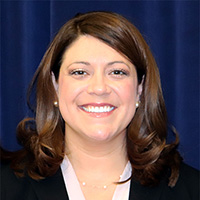
Jennifer West
Buckhorn High School
New Market, AL
Grades: 9–12
Students: 1,305
Region: Rural
When I was a special education teacher, I knew students who depended on school breakfast and lunch as their only meals during the school year, and I worried many would go hungry over the summer months. To mitigate this, I raised funds and collected nonperishable foods to provide 20 families with food during the break. My first year as an assistant principal, I scaled up this initiative and created our Care Closet—stocking hygiene products, clothes and shoes, school supplies, packaged food, detergent, towels, and other necessities. Now, as a school, we can meet many essential material needs on-site. The Care Closet is shared with numerous students each week, and we have developed partnerships to deliver other supportive resources for families in crisis. In creating a supportive and inclusive community within our four walls, we ensure that all students are prepared to learn.
Alaska
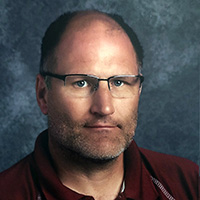
Daniel Beck
Kenai Middle School
Kenai, AK
Grades: 6–8
Students: 373
Region: Urban
I strive to foster a culture at Kenai Middle School (KMS) where all students feel valued and cared for. I approach each student with respect and dignity, and I look for positive outcomes in all interactions. When I work with students who are having behavior issues, I focus on changing the behaviors rather than consequences. Students respect me for the efforts I make to help them be successful at KMS and beyond, and they feel comfortable coming to me for help navigating through the many difficulties of middle level education. Parents find me approachable and contact me for assistance in matters that they feel need my attention. Through this approach, students become more caring as well—about their school, peers, and grades. KMS is a positive place for kids and much of that results from the culture that I demonstrate.
Arizona
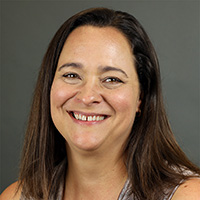
Beth Lehr
Sahuarita High School
Sahuarita, AZ
Grades: 9–12
Students: 1,080
Region: Rural
I believe that the relationships I have built at the school are all based on people knowing that I truly care about what is going on in their lives. Our school has a culture where people want to work and where students are comfortable being themselves. We have low turnover among our teachers and staff, and our reputation gives us an advantage in recruiting qualified people. My students know that their well-being is my guiding principle and that I won’t give up on them. It is humbling when high school students are willing to give me a hug in public and introduce me to their families. As wonderful as being named Arizona’s Assistant Principal of the Year has been, the “Best School Mom” award from the class of 2018 still ranks as one of my greatest professional accomplishments.
Arkansas
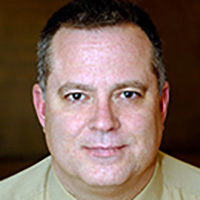
Don Eichenberger
Springdale High School
Springdale, AR
Grades: 10–12
Students: 2,101
Region: Rural
Leading learning through innovations in curriculum and instruction has been a major focus for me as a teacher, consultant, and administrator. At my school, we live by the following statement: “Learning for All, and All Means All.” As a leader, I work with our students, staff, families, and other key stakeholders in the community to ensure each student at our school has a personalized education plan and all the supports we can provide to help them realize their unique potential. I lead a comprehensive team of dedicated teachers, counselors, instructional facilitators, and other educational professionals to achieve an 87 percent graduation rate in a large rural high school that is 81 percent minority students and nearly 80 percent on free and reduced-price lunch. There is no better satisfaction than watching those students walk across the stage at graduation, accomplished and prepared to succeed in the real world.
Colorado
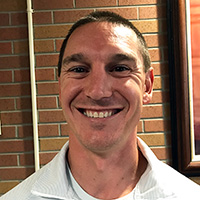
Waren Morrow
Lesher Middle School, an IB World School
Fort Collins, CO
Grades: 6–8
Students: 793
Region: Suburban
I entered education to make a positive impact on people, and I work daily to build a culture centered on respecting relationships and academic excellence. I was fortunate this year, after my wife underwent major lung surgery and I missed the first 3 weeks of school, to experience the positive impact that I have had on those around me. The day I returned to school, I was met by shouts of joy, hugs, letters, balloons, cards, unbelievable compliments, and a sense of authentic joy about my return. This solidified for me my daily focus of honoring and keeping people’s integrity intact, always greeting everyone with a smile, shaking hands and giving high-fives, being present and listening to others, being available, being honest, loving people beyond their current situation or circumstance, and putting the needs of others above myself through steadfast servant leadership.
Connecticut
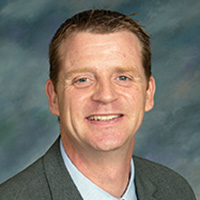
Todd Manuel
Trumbull High School
Trumbull, CT
Grades: 9–12
Students: 2,128
Region: Suburban
As a school-based leader, I have worked to establish and promote meaningful relationships between staff and students. These connections support the creation of stronger foundations that encourage social, emotional, and academic progressions. Throughout my years in Trumbull, I have seen firsthand the renewed commitment to continuous refinement of curriculum and instructional practices along with a devotion to collaboration and communication across all community constituents. By offering our staff opportunities to work together toward a common goal and learn from one another to further develop their professional practices, our school community’s work ethic has been revitalized. This was the focus of my work with the creation and implementation of our schoolwide advisory program. Its goal is to provide opportunities for students to cultivate stronger relationships with their peers and a faculty mentor. The program had an immediate positive impact on the climate for the over 2,500 students and staff.
Delaware
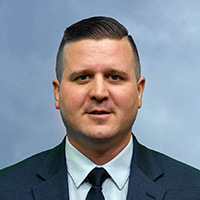
Kyle Bentley
Cape Henlopen High School
Lewes, DE
Grades: 9–12
Students: 1,585
Region: Rural
One of the first responsibilities I assumed at Cape Henlopen High School (CHHS) was the supervision of the AP program. By gathering qualitative data from stakeholders and analyzing quantitative data from exams, the findings indicated the number of AP exams and students in AP classes decreased significantly in 2017, and there were alarming inequities in the exam data. I established a plan focused on increasing achievement, access, and equity in the program. The efforts proved successful over the last three years—we increased the number of students taking AP classes at CHHS from 116 to 316 and increased the number of exams from 210 to 417. We tripled the number of Hispanic or Latino students with access to AP exams. The Hispanic subgroup outperformed all other subgroups in 2019. We also increased the number of students who earned a score of 3 or higher from 60 to 98.
District of Columbia
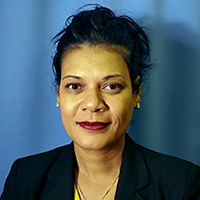
Shanna Young
School Without Walls at Francis-Stevens Ed Campus
Washington, D.C.
Grades: preK–8
Students: 549
Region: Urban
As an instructional leader, I am most proud of the work I spearheaded with building culture and developing climate in my school community. At the end of the 2016–17 school year, my school’s insight survey scores confirmed what I was feeling. There were several disconnects with academic expectations and student-teacher relationships throughout the school building. Deficit areas such as these negatively impact the learning environment and prevent student success. Believing there were others who wished to mend our school culture and climate, I sought the assistance of colleagues, and together we launched a school climate committee. I collaborated with teachers, families, students and other administrators to focus on building and strengthening relationships and creating child-centered classrooms where instruction was engaging, accessible, and rigorous. Together, we created schoolwide instructional expectations and built doable systems for guaranteed social-emotional learning design and practice.
Florida
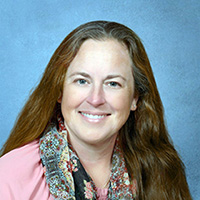
Melissa Laudani
Tuskawilla Middle School
Oviedo, FL
Grades: 6–8
Students: 1,174
Region: Suburban
I created a program of career exploration and entrepreneurship called ECI (Explore, Create, Innovate) that all students take at Tuskawilla Middle School. ECI has a foundation in design thinking and problem-based learning. In sixth grade, students take a career exploration class in which they investigate a variety of careers to find a match for their personal strengths. In seventh grade, they specialize in career options of their choosing under the umbrellas of design, medical, service, and technology. Eighth-grade students develop a business model canvas in which they solve an industry problem while working alongside business partner mentors, taking that solution from ideation to pitch. In addition to courses offered at all three grade levels, ECI includes interactive teaching techniques incorporated in all content areas. I worked with local industry business partners to incorporate real-world problems and provide guest speakers and field trip opportunities.
Georgia
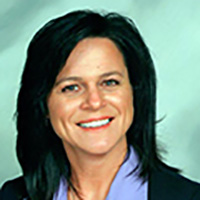
Tammy Marion
Mary Persons High School
Forsyth, GA
Grades: 9–12
Students: 1,180
Region: Rural
Mary Persons High School takes pride in our award-winning CHAMP (Courteous, Honorable, Accountable, Motivated, and Prepared) positive behavioral interventions and supports program that promotes success for students and teachers. While there are many successful components to this framework, I feel that building the master schedule based on the needs of our students is at the heart of what I do. I’m committed to providing teachers with common planning and opportunities for collaboration along with serving the academic and emotional needs of our students. Through this careful structuring, teachers can share data and revise lessons in real time, and consistency across content areas is promoted through our lesson plan template. Teachers and students monitor acceleration and remediation efforts during our weekly CHAMP block. This intentional scheduling has allowed us to implement specific programs and empowered the experts to work. As a result, students experience meaningful and purposeful lessons, our state scores have improved, and all achievement gaps have closed.
Hawaii
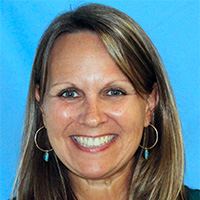
Larisa Gadach
Ewa Makai Middle School
Ewa Beach, HI
Grades: 6–8
Students: 1,350
Region: Suburban
One of my goals every year is to try to learn as many student names as I can. Although this may sound silly or senseless to some, it means the world to a student. If you know who they are, then they know they matter to you. I love walking around campus during unstructured times to have informal conversations and deepen my connections with my students. I love when they share stories about their lives, as this gives me more insight into who they are. I embrace their uniqueness to personalize my relationship with each student. I also feel strongly about building relationships with my staff. I just want everyone to know how important they are to me.
Idaho
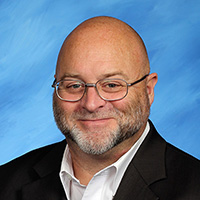
Craig Miller
Thunder Ridge High School
Idaho Falls, ID
Grades: 9–12
Students: 1,524
Region: Suburban
Building community is important at every school, especially when 1,300 students are brought together from rival schools. I have been involved in that by working with individuals and groups of students to solve conflicts, talking to as many students as I can in the halls, and contacting parents to share the great things their students are doing. As I conduct walk-through observations, I step into classrooms where teachers are on their preparation hour to talk to them about matters related and unrelated to school. I also put together activities for staff to work on together besides schoolwork. We prepared a “Student for a Day” activity for patrons—inviting them into classes to see the amazing things teachers are doing daily. All of these things and many more have made our school a great community for students, staff, and patrons.
Indiana
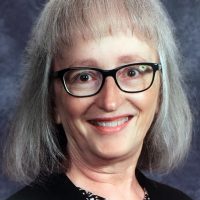
Susan Summers
Homestead High School
Fort Wayne, IN
Grades: 9–12
Students: 2,454
Region: Suburban
Soon after becoming assistant principal, I was asked to investigate the possibility of bringing a variety of college-level courses to our high school. Research indicates this opportunity helps students become more successful in their pursuit of postsecondary degrees. Eight years later, Homestead High School has a thriving dual-enrollment program. We now offer over 50 different college courses, most of which are tuition-free. We have over 50 teachers who are credentialed to teach dual credit through Indiana University, Purdue University at Fort Wayne, Ivy Tech Community College, and Ball State University. A student can graduate from high school with all their collegiate-level general education courses completed, and these are fully transferable to any public college in the state of Indiana. We have over 1,000 students participating in the program each year, earning over 10,000 credits and saving close to 8 million dollars in tuition annually.
Iowa
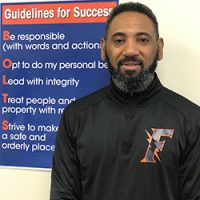
Sean Baylor
Franklin Middle School
West Branch, IA
Grades: 6–8
Students: 609
Region: Urban
I am proud to have contributed to the creation of a culturally specific initiative called the African-American Awareness Program. The project was designed to increase student awareness of African-American history. It encouraged minority students to learn more about community leaders, organizations, and historical figures. One objective was to develop young leaders through teamwork and higher-level thinking skills. The lack of minority students represented in advanced classes as well as the performing arts was unsettling. The program addressed many of the issues that discouraged African-American students from participating by teaching them about their history. Providing support and inclusion helped boost self-esteem, and academics improved for every student involved in the program. We saw a decrease in office referrals, and many went on to be outstanding high school students. The success of this project led the district to add the program to every middle level school.
Kentucky
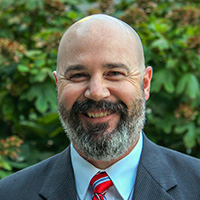
Jeff Schneider
Highlands High School
Fort Thomas, KY
Grades: 9–12
Students: 1,050
Region: Suburban
I have had the unusual experience of being assistant principal, principal and then assistant principal again in the same place.
Due to some personal issues I was unable to really pursue the principal job when it became available, and became the interim for one year. I did my best to keep the school on course that year, and I also took the opportunity to develop multiple programs that were new to the school. We began a credit recovery program, still in place today, which allows many students earn the necessary credits to graduate. We also added multiple dual credit courses providing students college credit opportunities in addition to advanced placement classes.
After that year, I returned to my assistant role with a different perspective on both jobs.
Maine
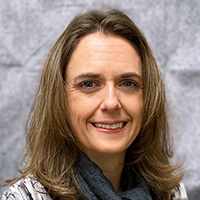
Erin Maguire
Bonny Eagle High School
Standish, ME
Grades: 9–12
Students: 1,156
Region: Rural
Leading Bonny Eagle High School (BEHS) through the transition to standards-based grading and reporting in a way that benefits student learning and is approachable to teachers has been my greatest success. The road toward convincing teachers and a community that precise learning targets, a clearly connected formative work, and a move away from the traditional zero-to-100 scale isn’t easy. It required commitment to a cause and a willingness to check and adjust without hesitation or allowing pride to get in the way. I worked with small groups of teachers to look deeply into curriculum and grading and answer the age-old question one classroom at a time: Why are we doing this? BEHS is now 100 percent standards based, and reporting and teachers are building formative roadmaps to summative success for students. Those roadmaps are reinventing the collaboration between a teacher and their student no matter the student’s disability, strengths, or home life.
Maryland
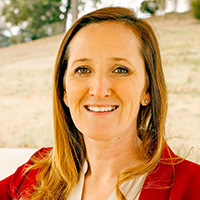
Catherine Sutton
Calvert High School
Prince Frederick, MD
Grades: 9–12
Students: 1,166
Region: Rural
I am passionate about continuous improvement of school culture because students can only achieve high levels of learning if they feel safe and accepted. For this reason, I established my Positive Behavioral Interventions and Supports Student Leaders program, where students lead monthly social-emotional lessons to their peers through an advisory period. I also believe that teenagers need more exposure to positive peer models. Each month, I work with my group of over 100 student leaders to develop our monthly lesson. These students then work with their partner teacher to finalize and implement their lesson plan. Last May, our student leaders planned and organized a Community Day, where the entire school bonded through a guest speaker and team-building activities. We have seen incredible growth in our school climate data after one year of implementation, especially in the area of student-to-student interactions.
Massachusetts
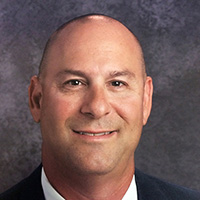
Christopher Costa
Joseph Case High School
Swansea, MA
Grades: 9–12
Students: 536
Region: Suburban
I established an at-risk focus group intent on building culture that values student-centeredness and relationships. Students were identified from the freshman and sophomore classes who struggled with attendance, academics, and behavior. The goal was to identify students early, provide additional supports in the target areas, and allow them to realize some early success that will positively influence their career. We had bimonthly meetings to discuss topics that are essential to successful school performance. Each student completed a presurvey on topics like time management, semester goals, time spent on academics, course selection, obstacles to success, personal relationships, and school activities. Those meetings provided students a forum to share their thoughts on the topics. The final meeting included an exit survey like the one they took at the first meeting, where data was collected on how their views and practices may have transformed.
Michigan
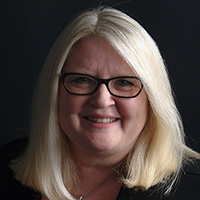
Colleen Gruben
Warren Woods Tower High School
Warren, MI
Grades: 9–12
Students: 1,085
Region: Suburban
Working in a school environment that is dedicated to making a positive impact on the lives of its students is what makes Warren Woods Tower High School special and the role of assistant principal so meaningful. During my 22-year tenure, the percentage of students on free and reduced-price lunch has risen from 10 percent to over 50 percent. For optimal emotional and intellectual growth, a child’s basic needs must be met. Being available and establishing an open, trusting environment ensures there is someone to advocate for their day-to-day needs. Our greatest successes are those connections and positive relationships that are fostered through a collaborative culture that focuses on the whole child. The many long-lasting relationships formed with students, parents, and staff have proven to be the most rewarding aspect of the job.
Minnesota
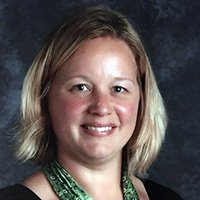
Jill Walter
Bemidji High School
Bemidji, MN
Grades: 9–12
Students: 1,416
Region: Rural
With a focus on building relationships with students and using that lens to work through crisis and challenging situations, our team worked to reflect on our practices and to answer the question, “How can we be better for our students and our staff?” The answer to that question led us to find ways to support our staff and especially our paraprofessionals. With monthly trainings to build these skills, further professional development to focus on our nonverbal skills and healthy classroom practices, and a concerted effort to set up a training plan for new staff in our building, we are seeing that staff feel supported and connected. Our students now report feeling listened to, calmer, and ready to learn even on challenging days. When we show students that we care, we know that we can better help them reach their goals.
Mississippi
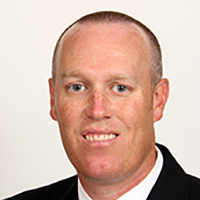
Matt Buchanan
Northwest Rankin High School
Flowood, MS
Grades: 9–12
Students: 1,708
Region: Suburban
I first met a freshman student in 2015 who, along with four other students, decided to bring alcohol to school. Each student was recommended for placement in our district’s alternative school setting. Upon her return, we worked through the situation. We spoke, we laughed, we cried, and we grew. We developed a healthy relationship built on honesty and trust through communication. A decision that could have ruined high school helped her change for the better. Upon graduating in 2019, she wrote me a letter, stating, “I honestly don’t know where I would be today if it wasn’t for you. You gave me a second chance. You have become more than just a principal to me, you have become someone I look up to and someone I don’t want to disappoint. I hope I continue to make you proud.” My response: “Yes, you absolutely make me proud.”
Missouri
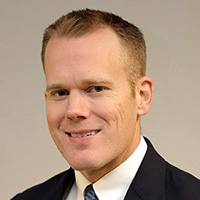
Jon Fitzgerald
Pattonville High School
Maryland Heights, MO
Grades: 9–12
Students: 1,781
Region: Suburban
I am most proud of my role leading learning in the career pathways that we have developed at Pattonville High School. Something that jumps out at me in retrospect were the relative risks we took to ensure that we built solid programs in the areas of computer science, engineering, biomedical science, and nursing. For example, we repurposed our best math teacher to become our computer science teacher to ensure the program had a top-notch instructor. We designed and created a simulation lab for our nursing program that rivaled any college simulation lab, because it was important to provide students with access to high-level materials. These programs are now all extremely successful, and I believe it’s because we invested heavily in them in terms of resources, energy, human capital, and a passion for education.
Montana
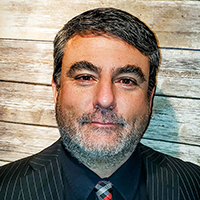
John Larsen
Dawson County High School
Glendive, MT
Grades: 9–12
Students: 337
Region: Rural
In 2018, we launched a leadership academy to work on improving the culture at Dawson County High School and enhance the leadership capabilities of the students. The leadership academy was open to all members of the student body and met on Friday mornings before school. Our administrative team led activities on different tenets of leadership with the focus on servant leadership. Once a month, we invited community members in positions of leadership to come share their experiences with our students. Lessons from community members—including a college men’s basketball coach who worked at an orphanage in Kenya for 10 years and our county’s first female district judge who was on the bench before age 40—gave the students a wide perspective of leadership. The students took these lessons and applied them throughout the school in various clubs, student government, sports teams, hallways, and classrooms.
Nebraska
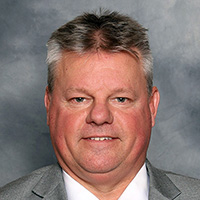
James Kasik
Schuyler Central High School
Schuyler, NE
Grades: 9–12
Students: 593
Region: Rural
Schuyler Central High School is a school of about 600 consisting of 92 percent minority students of varied races, cultures, and ethnic backgrounds. With this much diversity it is important to have a welcoming and tolerant school climate. The school works hard to build a strong foundation based on building positive relationships with kids. We train all our staff in Capturing Kids’ Hearts as well as accreditation of prior learning strategies. These skills, along with 20 minutes of focus time each day, help build a culture of kindness where we celebrate our diversity. Visitors who spend time in our school almost always comment on how polite and kind our student body both to them and to others within our school. We are proud of the environment that we have all worked so hard to create.
New Mexico
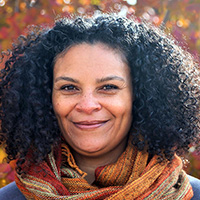
Rebekah Floryance
Career Enrichment Center and Early College Academy
Albuquerque, NM
Grades: 9–12
Students: 197
Region: Urban
My educational journey started in elementary school, where I implemented dual language and full inclusion cohorts. I transitioned to middle level education and implemented a schoolwide behavior program that invovled staff trainings, student workshops, data collection, and ongoing support. Within three months, behavioral referrals dropped from 10 a day to four a week. This year at Career Enrichment Center and Early College Academy I surveyed my high school community—the data overwhelmingly showed serious concern for mental health, so I met with seniors to create a peer-mentorship program and sponsor their club. “Survive and Thrive” was designed to support mental well-being. I help create anonymous boxes on campus for students to report concerns or offer positive feedback. For students who are struggling academically, I match NHS students with those who need tutoring. Students are the driving force for why I go into work each day.
New York
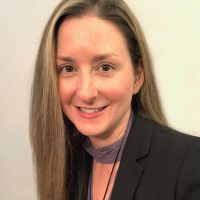
Kristen Lennon-McMahan
Shenendehowa High School West
Clifton Park, NY
Grades: 9–12
Students: 3,179
Region: Suburban
My passion is creating an environment in which all students, faculty, and staff feel welcome and cared about. I successfully implemented buildingwide initiatives (Day of Acceptance for grade 9 and Day of Dialogue in grades 9–12) to encourage cultural proficiency, respect for all, and provide a voice for the student body. I also worked with district-level administrators to develop turnkey trainings for district support staff in “The Art of Understanding Our Students,” to ensure everyone received the training necessary to help all students be successful. Four hundred and thirty-four support staff members were trained in the 2018–19 school year. This work continued into the 2019–20 school year.
North Carolina
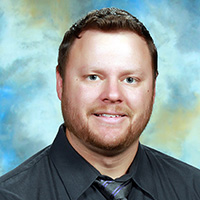
Carl Cruthis
Southwest High School
Jacksonville, NC
Grades: 9–12
Students: 717
Region: Rural
I have worked collaboratively with our instructional support team to develop a coaching model for our professional development initiatives. When Onslow County Schools rolled out their instructional framework, our team decided that we needed to approach the training in a way that built relational trust and a culture that allowed teachers to try new strategies with the support they need to be successful. I also created a walk-through document that connected classroom instruction to the framework and provided the administration with an opportunity to provide timely feedback. Together, these initiatives have helped identify model classrooms for each of the four domains of the instructional framework. These model classrooms are now used to provide additional support for our beginning teachers. By developing a culture of coaching, our school has increased its instructional focus and use of researched-based high-yield strategies.
North Dakota
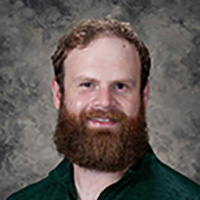
Wayne Samson
West Fargo High School
West Fargo, ND
Grades: 9–12
Students: 1,420
Region: Urban
Our school spearheaded the creation of a student support team where we focus on a smaller number of Tier 3 students, creating something like a Tier 3.5 to guarantee that these students received the maximum supports that the school and community can provide. Overall, we have seen massive success with the work of our team; not only do the adults see improvements in our students, but student feedback has shown that they feel supported as well. We can focus on specific interventions for these high-risk students and have found that many of the students, 10 of the 13, are on pace to graduate on time. Prior to the implementation team, the success of these students seemed a distant and difficult journey to trek. The creation of the student support team has been one of our more successful programming ideas.
Ohio
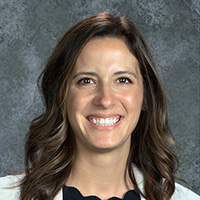
Meg Simon
Findlay High School
Findlay, OH
Grades: 9–12
Students: 1,527
Region: Suburban
In my first year at Findlay High School, I created a program called Turkeys for Trojans, which raised $4,000 to provide meals for students and families during Thanksgiving. I inspired students, staff, and the community to provide funds, as well as collaborate with local grocery stores to provide and deliver the meals. Additionally, I created a C.A.R.E initiative that provides students with access to many basic necessities. This program created a process to streamline students to resources through an online referral system. This allows the building to track and ensure students are promptly connected to resources. I spent the summer planning and creating a professional development experience for staff that was second to none. Through planning and collaboration with teachers, I led the creation of a one-of-a-kind training based on “The 7 Habits of Highly Effective People” that included a DJ, interactive activities, raffle prizes, and heartfelt letters to all staff from their family members.
Oklahoma
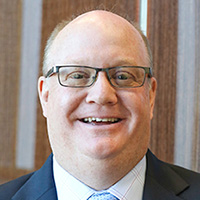
Eric Fox
Jenks High School
Jenks, OK
Grades: 10–12
Students: 2,547
Region: Suburban
Leading learning is at the heart of what I do and who I am for students and staff. I celebrate new learning weekly by sending staff a Podcast of the Week to reflect upon as well as a data point—a snapshot of student life or a school performance. I’ve sent out a weekly video conversation with a student; this provides staff with authentic feedback from student voices. I always ask guests to name one thing they want teachers to know about our students, and their answers amaze and inspire me. It’s important our staff never forget that data points are really students whom we serve. I want our team to truly know their fears, their hopes, their challenges, and their aspirations. Those firsthand accounts help us persevere in the critical work of supporting students as they create their futures while in our classrooms today.
Oregon
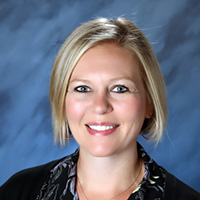
Amy Nimz
Dexter McCarty Middle School
Gresham, OR
Grades: 6–8
Students: 540
Region: Suburban
As an assistant principal at Dexter McCarty Middle School, a large focus for my work around leading learning has been through my work with Advancement Via Individual Determination (AVID). This program has been the foundation to leveling the playing field and closing the achievement gap for our students. It has provided students with opportunities to access rigorous coursework as well as skills that will provide a lifelong advantage, regardless of the path they choose in their future. Our approach to AVID has students developing soft skills through schoolwide organizational expectations, note-taking strategies, and the intentional teaching of discussion techniques. Through time and practice, we have provided staff with focused professional development opportunities that model and reinforce the AVID methodologies that we have committed to implement across all content areas. This intentional practice has increased engagement and educational outcomes for our traditionally underserved populations.
Pennsylvania
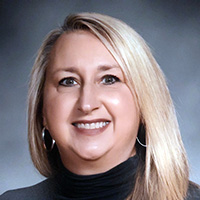
Monica Ouly-Uhl
Orefield Middle School
Orefield, PA
Grades: 6–8
Students: 974
Region: Suburban
As an assistant principal, I have worked hard on building positive relationships and making it a priority to ensure that staff and students at Orefield Middle School (OMS) feel safe, valued, and respected. I created a unique bullying prevention program based on kindness and positivity, and I believe that involving every staff member as we work together toward a common goal has helped to form the culture at OMS. Upon entering the building, the culture is immediately evident through our welcoming environment, the pride in our school, and the positive messages displayed. There is a camaraderie among the staff like no other. They continuously support one another, especially during tough times. I am very proud that OMS has become a school where staff enjoy working and students look forward to attending; where everyone is held to high standards and providing each student with what they need to be successful is a priority.
Rhode Island
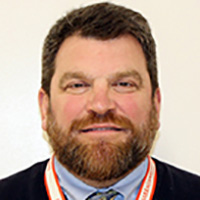
Toby Gibbons
Narragansett High School
Narragansett, RI
Grades: 9–12
Students: 445
Region: Suburban
I believe that to build a positive learning culture in any school, every administrator needs to make endless investments in building personal relationships. I strive to connect with everyone in the building on a daily basis. Being near the parking lot at the start of the day and hallways during each passing time, stepping into classes and participating, and being present in lunch rooms are all good starting points. But simply being present is not enough. I strive to personally get to know each student, teacher, and member of staff. I want to ask about their role in the play, the result of their game, the attendance at the concert, the health of a child, or plans after school. By developing a high sense of community, all relationships become more positive which in return builds a strong and positive building culture.
South Carolina
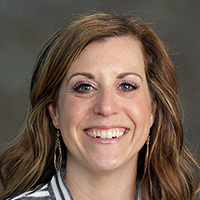
Leah Sarantopoulos
Carolina Springs Middle School
Lexington, SC
Grades: 6–8
Students: 938
Region: Suburban
I am passionate about harnessing the power of intentional relationships to positively impact student achievement outcomes. Under my leadership at Carolina Springs Middle School, the school recently became one of the first middle level schools in South Carolina to be distinguished as a Capturing Kids’ Hearts National Showcase School. This award underscores my commitment to building and maintaining a strong school culture that gives a voice to all students.
South Dakota
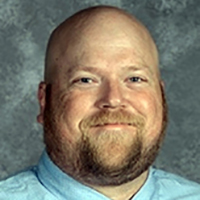
Chad Johnson
Watertown Middle School
Watertown, SD
Grades: 7–8
Students: 641
Region: Rural
At Watertown Middle School, we’ve dedicated ourselves to becoming a learning community that’s focused on not only the academic development of our students, but also their social and emotional development. We’ve instilled among our staff a priority that all students are greeted with a smile every morning as they enter the building; receive our comprehensive advisory program (which focuses on social skills, character traits, academic performance review, and team building); are assessed academically through diagnostics and appropriate interventions are applied; conference weekly with their academic advisors; are allowed to express voice and choice when possible; and are provided the opportunity to give feedback on climate and culture, which is collected through personal conversations with each student throughout the school year. This focus on relationships has resulted in decreased office referrals and increased attendance.
Tennessee
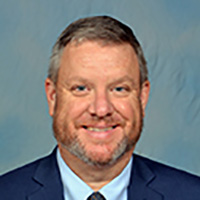
Kevin Gideon
Bartlett High School
Bartlett, TN
Grades: 10–12
Students: 2,060
Region: Suburban
Recently, students were given an assignment to write thank-you letters to someone at the school. I received a letter from a student who stated, “It is extremely comforting to know that members of this school—especially you—from my perspective, actually care about us and our success … I cannot wait to be successful and come back to see you … I am determined to make you proud.” Her words gave me a moment of pause to reflect on her growth over her time here at Bartlett High School. Her words validate the work I have undertaken to further the culture of the school. Daily interactions with all stakeholders are key to our success. The cultural dynamics described in Building Ranks™: A Comprehensive Framework for Effective School Leaders have provided me and the administrative team a means to develop a culture of learning that produces successful students.
Texas
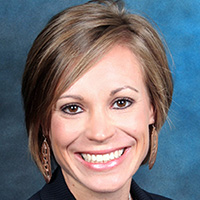
April Harris
Midway Middle School
Hewitt, TX
Grades: 7–8
Students: 1,317
Region: Suburban
The foundation of a campus is built on the culture and climate that is created. This year, our campus incorporated a summer program that promoted relationship building while students were on break. We miss our kids during summer, and I wanted to develop a way to connect with them. Using Google Maps, student data, parent input, and volunteers, I created Midway Middle School Community and Beyond. Staff volunteers joined me on the journey across our district. We brought videos promoting our campus, handouts and resources for the new year, computers for online registration, snacks, drinks, and a drawing for prizes. Our goal was to eliminate anxiety and stress, answer questions, and connect families with a staff member from our campus. We had excellent feedback and plan to continue next summer. I have also incorporated two block parties during the year as well.
Utah
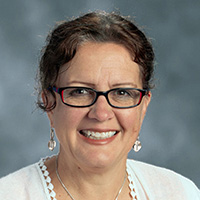
Audrey Fish
Oquirrh Hills Middle School
Riverton, UT
Grades: 7–9
Students: 1,303
Region: Suburban
Nurturing is different from just looking after someone or something—it is caring for and encouraging someone’s growth or development. In schools, it is imperative that we nurture one another along our educational paths. During my decadelong career as a middle level assistant principal, I have nurtured others and been nurtured. One of my favorite success stories occurred during the past two years when I implemented an instructional coaching model at our school. Hundreds of observations made by peers to improve behavioral, emotional, and cognitive engagement has had a positive impact not only on student learning, but on our school culture as well. Guiding each teacher into becoming a reflective practitioner has a powerful impact on our school. I am out to improve student learning, one teacher at a time.
Vermont
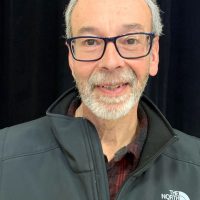
Robert Gulardo
Twinfield Union School
Plainfield, VT
Grades: K–12
Students: 350
Region: Rural
Virginia
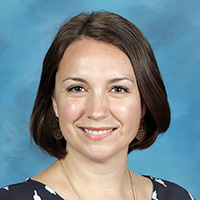
Rebecca Harmon
Bailey Bridge Middle School
Midlothian, VA
Grades: 6–8
Students: 1,574
Region: Suburban
I have been fortunate to see how the work I do has a direct impact on our school’s culture. At the most basic level, my success comes from the tone I set with my tenacious work ethic along with my enthusiasm. When implementing change, I am conscious about being a clear communicator and always include the “why,” with kindness and care for all stakeholders. I work closely with our team to keep our physical building a place that is welcoming and conducive to learning. I build culture by talking to students respectfully and with authority through my careful word choice and intentional tone; and I make connections and set expectations with students through videos in which I talk directly to them. Using my “Office on Wheels” allows me to be visible and available to students and staff.
Washington
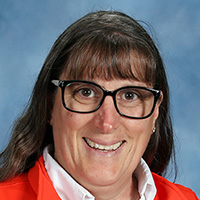
Jobie Flint
Cedar Heights Middle School
Port Orchard, WA
Grades: 6–8
Students: 692
Region: Rural
During my third year as an assistant principal, the director of teaching and learning asked me to teach a summer class on using the interactive notebook in the classroom. I was excited to share content and reaffirm my belief that, among educators, we must continue learning in order to become better teachers. Of those signed up for my session, I was thrilled to see over half were teachers from my building. The day was spent modeling and practicing the art of interactive notebooking for learning. After class, I talked with a veteran teacher from my building. It was rewarding and humbling when he said he had chosen this course knowing that he would learn real strategies because I had been a successful classroom teacher, and that he knew he could depend on my continued support as he worked to perfect his practice.
West Virginia

Matt Rhodes
Dunbar Middle School
Dunbar, WV
Grades: 6–8
Students: 380
Region: Suburban
As a discipline-oriented administrator, it remains difficult to exercise my passion for excellent teaching strategies. However, after years in this position, I have found that they are one and the same. Through developed relationships, discipline can be improved buildingwide—which then leads to genuine learning, accomplishment, and student achievement. As a result, I have realized portions of the school’s vision by being more proactive and less reactive and working to create connections with students through conversation and meaningful relationships. It is this student-centeredness that has improved culture. Tardies and back-talking give way to encouragement, support, and shared success so that the expectation of all stakeholders becomes respect for our goals. Meeting our mission through the wellness and equity of the student population is my greatest success. It is at that point that I can give even my most challenging students a glimpse of what their future can hold.
Wisconsin
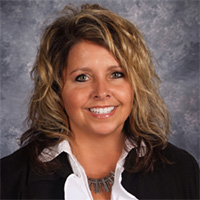
Debra Paradowski
Arrowhead Union High School
Hartland, WI
Grades: 9–12
Students: 2,139
Region: Rural
Three years ago, I started a student-centered group called Students Leaving a Mark (SLAM) to improve our school culture. By giving students a voice in our school’s routines, they were empowered, engaged, and became confident learners. Opportunities were created for students to demonstrate leadership skills and guide our school in the right direction. Students made decisions about topics they wanted to address and outlined their action steps. In a short time, the SLAM students had a direct impact on our school’s culture by adding murals in the hallways and positive messages on the stairwells. They painted the walls in study hall, renovated the staff lunchroom, and created meaningful ways to recognize student and staff excellence. Overall, we have observed an increase in positive behavior, attendance, academic accomplishments, and pride in our school.
Wyoming
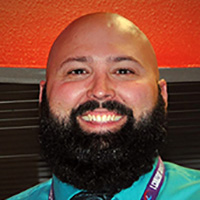
James Whitehead
Johnson Junior High School
Cheyenne, WY
Grades: 7–8
Students: 782
Region: Urban
When I first started at Johnson Junior High, professional learning community (PLC) team meetings were not structured or focused on student achievement. I started attending the meetings regularly to help facilitate the PLC process with a focus on leading learning. Through this work, we were able to grow our science and English language arts scores to the highest we have had at Johnson Junior High School in 10 years. In addition, through the focus on the PLC development, we have been able to start improving our building’s culture in student-centeredness and relationships. It is clear to me that when we start to focus on the facets of leading learning or building culture, the other is positively impacted.
